- Caring for Currants in Mid-Summer – Essential After-Fruiting Tasks!
- 1. Pruning
- 2. Mulching
- 3. Watering
- 4. Fertilizing
- 5. Pest and Disease Control
- Pruning Dead and Damaged Branches
- Thinning Out Excess Fruiting Stems
- Mulching to Conserve Moisture
- Checking for Pests and Diseases
- Pests
- Diseases
- Prevention
- Conclusion
- Watering the Plants Adequately
- Applying Organic Fertilizers
- Protecting from Birds and Other Animals
- General Maintenance and Weed Control
- Weed Control
- Pruning
- Fertilizing
- Additional Maintenance Tasks
- Conclusion
- Question-answer:
- What should I do with currant bushes in mid-summer?
- What are some signs of pests or disease in currant bushes?
- How often should I water currant bushes in mid-summer?
- Is it necessary to add mulch around currant bushes in mid-summer?
- When is the best time to prune currant bushes?
- Video: The BEST Way to Stop Powdery Mildew
Now that the fruiting season for currants is over, it’s time to give your plants some care and attention. Currants are hardy shrubs that produce delicious berries, but they need proper care to stay healthy and productive. Here are five important tasks to carry out in mid-summer to ensure your currants continue to thrive.
1. Prune for shape and productivity: Pruning is an essential task for currant bushes. Remove any dead or diseased branches to prevent the spread of pests and diseases. Additionally, prune the branches to maintain an open and airy shape, allowing sunlight to reach all parts of the plant. This will promote better fruiting and reduce the risk of fungal infections.
2. Mulch to conserve moisture: Mulching is crucial to conserve moisture and suppress weed growth around your currant bushes. Apply a layer of organic mulch, such as straw or wood chips, around the base of the plants. This will help retain soil moisture, regulate temperature, and reduce the need for frequent watering.
3. Provide regular watering: While currants are relatively drought-tolerant, they still require regular watering, especially during hot and dry spells. Water deeply and thoroughly to ensure the roots receive enough moisture. Avoid overhead watering, as wet leaves can lead to fungal diseases. Instead, water at the base of the plants using a soaker hose or drip irrigation system.
4. Fertilize for optimal growth: Currant bushes benefit from regular fertilization to support healthy growth and fruit production. Use a balanced organic fertilizer or well-rotted compost. Apply the fertilizer around the base of the plants, avoiding direct contact with the stems. Water the plants thoroughly after fertilizing to help the nutrients penetrate the soil.
5. Monitor for pests and diseases: Keep a close eye on your currant bushes for any signs of pests or diseases. Common pests include aphids, currant fruit fly, and gooseberry sawfly. If you notice any signs of infestation, take appropriate measures, such as using organic insecticides or picking off affected leaves and fruits. Also, be on the lookout for fungal diseases like powdery mildew and rust, and apply appropriate fungicides if necessary.
By following these five essential tasks in mid-summer, you can ensure that your currant bushes stay healthy and productive. With proper care, you can enjoy a bountiful harvest of delicious currants year after year!
Caring for Currants in Mid-Summer – Essential After-Fruiting Tasks!
1. Pruning
After the fruiting period, it is important to prune your currant bushes to encourage new growth and maintain their shape. Remove any dead, damaged, or diseased branches, as well as any branches that are crossing or overcrowding the bush. Pruning will help improve airflow and sunlight penetration, leading to healthier plants and better fruit production.
2. Mulching
Applying a layer of mulch around your currant bushes can help conserve moisture, suppress weeds, and regulate soil temperature. Use organic materials such as compost, straw, or wood chips and spread them around the base of the plants, taking care not to cover the stems. Mulching will also provide nutrients to the soil as it breaks down over time.
3. Watering
Proper watering is crucial for the health and productivity of currant bushes. In mid-summer, when temperatures are high, it is important to ensure that your plants receive enough water. Water deeply and thoroughly, making sure the soil is evenly moist. Avoid overwatering, as standing water can lead to root rot. Using a drip irrigation system or soaker hose can help deliver water directly to the roots.
4. Fertilizing
To promote healthy growth and fruit production, it is recommended to fertilize your currant bushes after fruiting. Use a balanced, slow-release fertilizer or a well-composted organic fertilizer. Apply the fertilizer according to the package instructions, taking care not to over-fertilize, as this can lead to excessive vegetative growth and reduced fruiting.
5. Pest and Disease Control
Mid-summer is a crucial time to monitor your currant bushes for pests and diseases. Inspect the plants regularly for signs of infestation or disease, such as curled leaves, discolored foliage, or small holes. If any issues are detected, take appropriate measures to control and prevent further damage. This may include using organic insecticides or fungicides, removing affected leaves or branches, and practicing good sanitation by removing fallen leaves and debris.
By performing these essential after-fruiting tasks, you can ensure the health and productivity of your currant bushes, leading to a bountiful harvest for years to come!
Pruning Dead and Damaged Branches
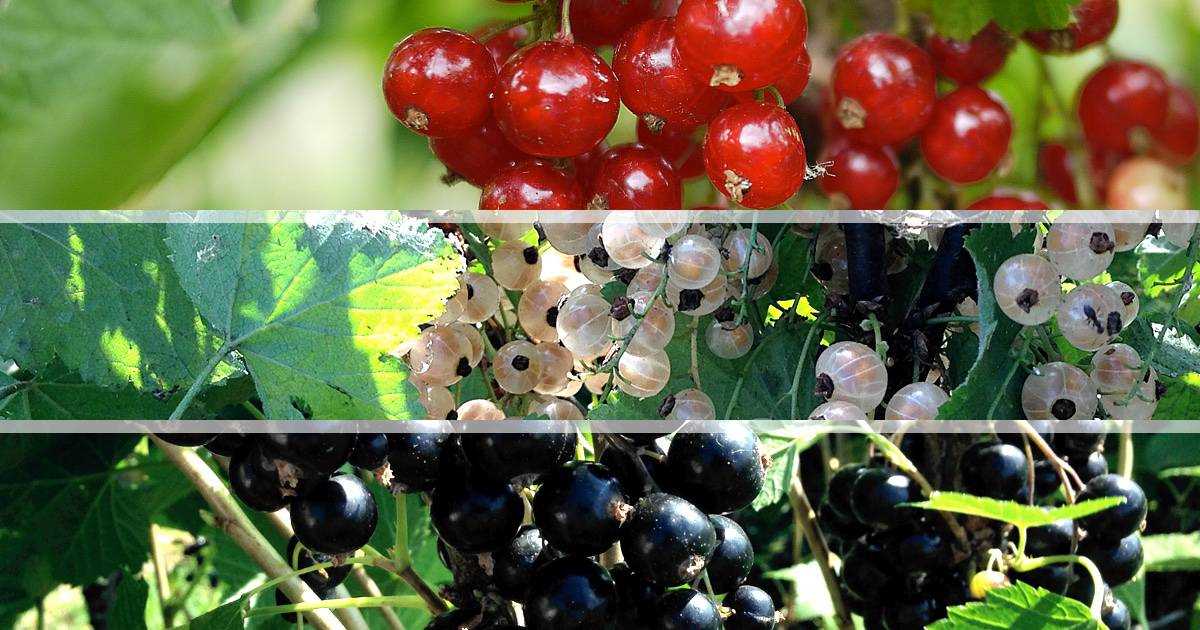
Pruning dead and damaged branches is an important step in caring for currants in mid-summer. Removing these branches not only improves the overall appearance of the plant, but also promotes its health and vitality.
Here are some steps to follow when pruning dead and damaged branches:
- Inspect the plant carefully and identify any branches that are dead or damaged. These branches may be discolored, wilted, or cracked.
- Using a pair of clean and sharp pruning shears, make clean cuts just above the healthy bud or branch collar. Avoid leaving stubs.
- Remove the pruned branches from the area to prevent the spread of disease or pests.
- If you notice any signs of disease or pests on the pruned branches, disinfect your pruning shears with a solution of one part bleach to nine parts water before moving on to the next branch.
- After pruning, apply a layer of mulch around the base of the plant to help retain moisture and suppress weed growth.
Regularly pruning dead and damaged branches not only improves the overall health and appearance of your currant plant, but it also encourages the growth of new, healthy branches. By removing these branches, you are allowing the plant to allocate more resources to productive growth, resulting in a better harvest the following season.
Thinning Out Excess Fruiting Stems
Thinning out excess fruiting stems is an important task to ensure the health and productivity of your currant plants. By removing some of the crowded or weak stems, you can promote better air circulation, reduce the risk of diseases, and improve the quality of the remaining fruits.
Why thin out excess fruiting stems?
- Improved air circulation: Thinning out crowded stems allows for better airflow, which helps prevent fungal diseases and promotes overall plant health.
- Enhanced fruit quality: Removing some of the weaker or crowded stems ensures that the remaining fruits get more access to sunlight and nutrients, resulting in larger and sweeter berries.
- Easier harvesting: Thinning out excess stems makes it easier to harvest the fruits, as the remaining stems will have more space and be less tangled.
When to thin out fruiting stems?
Thinning out fruiting stems is typically done in mid to late summer, after the currants have finished fruiting. This allows you to assess the health and vigor of each stem and determine which ones to remove.
How to thin out fruiting stems?
- Start by inspecting the currant bush and identifying crowded or weak-looking stems.
- Using clean pruning shears or scissors, carefully remove the selected stems by cutting them close to the main branch or stem.
- Be sure to avoid removing too many stems, as this can negatively impact the plant’s ability to produce fruits in the following year.
- If you have a large number of excess stems, thin them out gradually over a few weeks to prevent stress on the plant.
What to do with the removed stems?
If the removed stems are healthy and disease-free, you can consider using them for plant propagation. Cut them into smaller sections, around 6 inches long, and plant them in a separate area or in pots with well-draining soil. Keep the cuttings well-watered and shaded until they develop roots.
Thinning out excess fruiting stems is an essential part of caring for currants in mid-summer. By taking the time to remove crowded or weak stems, you’ll be ensuring the health and productivity of your plants, and enjoying better-quality fruits in the next harvest.
Mulching to Conserve Moisture
Mulching is an important step in caring for currants in mid-summer. It helps to conserve moisture in the soil, regulate temperatures, prevent weed growth, and improve overall plant health.
Why Mulch?
- Mulching helps retain moisture in the soil, reducing the frequency of watering.
- It regulates soil temperature, keeping it cooler during hot summer days and warmer during cool nights.
- Mulching prevents weed growth, which competes with currant plants for nutrients and water.
- It improves the overall health of the plants by providing a layer of organic material that decomposes and enriches the soil.
When to Mulch?
Mulching should be done after the fruiting period, once the soil has been watered and the plants have been cared for. This is usually around mid-summer.
How to Mulch?
- Start by removing any weeds or grass in the area around the currant plants.
- Spread a layer of organic mulch, such as wood chips or straw, around the base of the plants. The mulch should be around 2-3 inches deep.
- Avoid piling the mulch directly against the stems of the plants, as this can promote rotting.
- Leave a small gap around the stems to allow for airflow.
- Water the mulched area thoroughly to help the mulch settle and retain moisture.
Mulching Tips:
- Replenish the mulch as needed throughout the summer, especially if it starts to break down or becomes thin.
- Avoid using mulch made from walnut or cedar trees, as they can release compounds that are toxic to some plants.
- Consider using a mulch material that will break down slowly over time, such as wood chips, as it will continue to improve the soil health as it decomposes.
- Mulching can also be done in early spring to help conserve moisture and suppress weed growth throughout the growing season.
By mulching your currant plants, you can create a healthier growing environment and reduce the need for excessive watering and weeding. Give it a try and see the benefits for yourself!
Checking for Pests and Diseases
After the fruiting period of currants, it is important to check for any signs of pests and diseases that may have affected the plants. These can have a detrimental effect on the health and productivity of the currant bushes if left untreated.
Pests
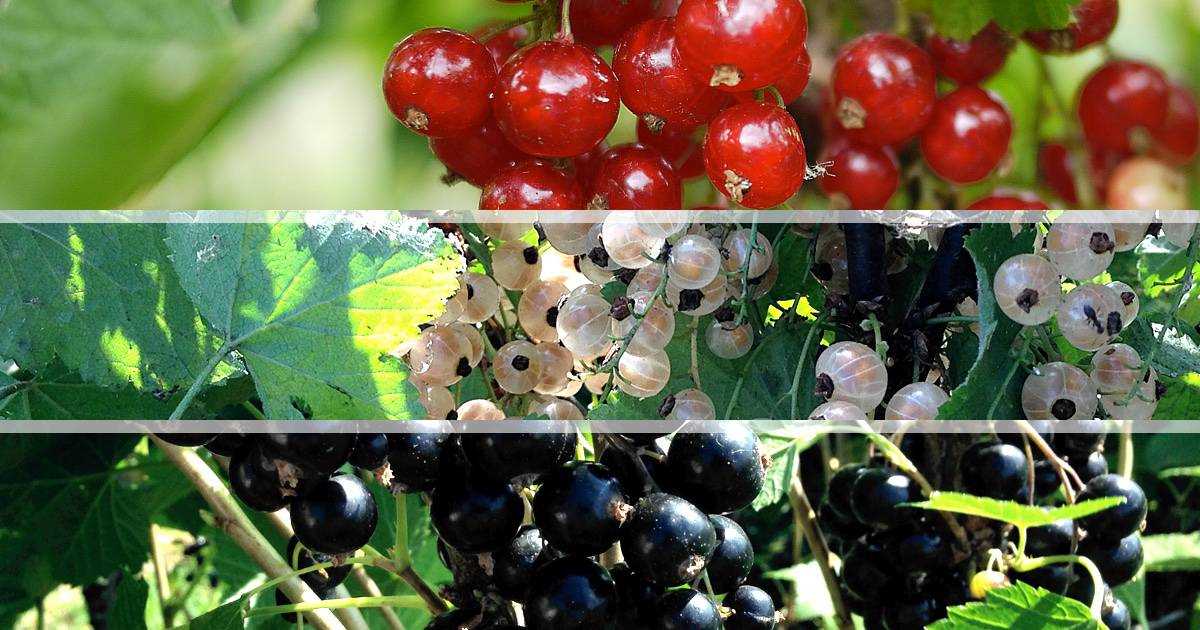
Inspect the currant bushes carefully for any signs of pests such as aphids, leafhoppers, or currant worms. These pests can cause damage to the foliage and fruit of the currant plants.
If you notice any infestation, it is recommended to take immediate action to prevent further spread. For aphids and leafhoppers, you can try removing them manually or using an insecticidal soap spray. For currant worms, you can consider using an organic insecticide specifically designed for their control.
Diseases
Check for any symptoms of diseases like powdery mildew, leaf spot, or currant rust. Powdery mildew appears as a white powdery coating on the leaves and stems, while leaf spot appears as circular brown or black spots on the foliage. Currant rust is characterized by orange or yellowish spots and pustules on the leaves.
If you observe any signs of diseases, it is important to take appropriate measures to prevent the spread and minimize the damage. Remove and destroy any infected leaves or branches. Apply a fungicide recommended for the specific disease, following the manufacturer’s instructions carefully.
Prevention
To minimize the risk of pests and diseases, it is important to maintain good plant hygiene and regularly inspect the currant bushes. Ensure proper spacing between plants to allow for good air circulation and sunlight penetration. Remove any fallen leaves or plant debris promptly to prevent the build-up of pathogens and pests.
Consider using organic pest and disease control methods such as beneficial insects, neem oil, or copper-based fungicides. These can help protect the currant bushes without harming the environment or beneficial organisms.
Conclusion
Checking the currant bushes for pests and diseases after fruiting is crucial to maintain their health and productivity. By being vigilant and taking prompt action, you can ensure that your currant plants stay in optimal condition, providing you with a bountiful harvest in the future.
Watering the Plants Adequately
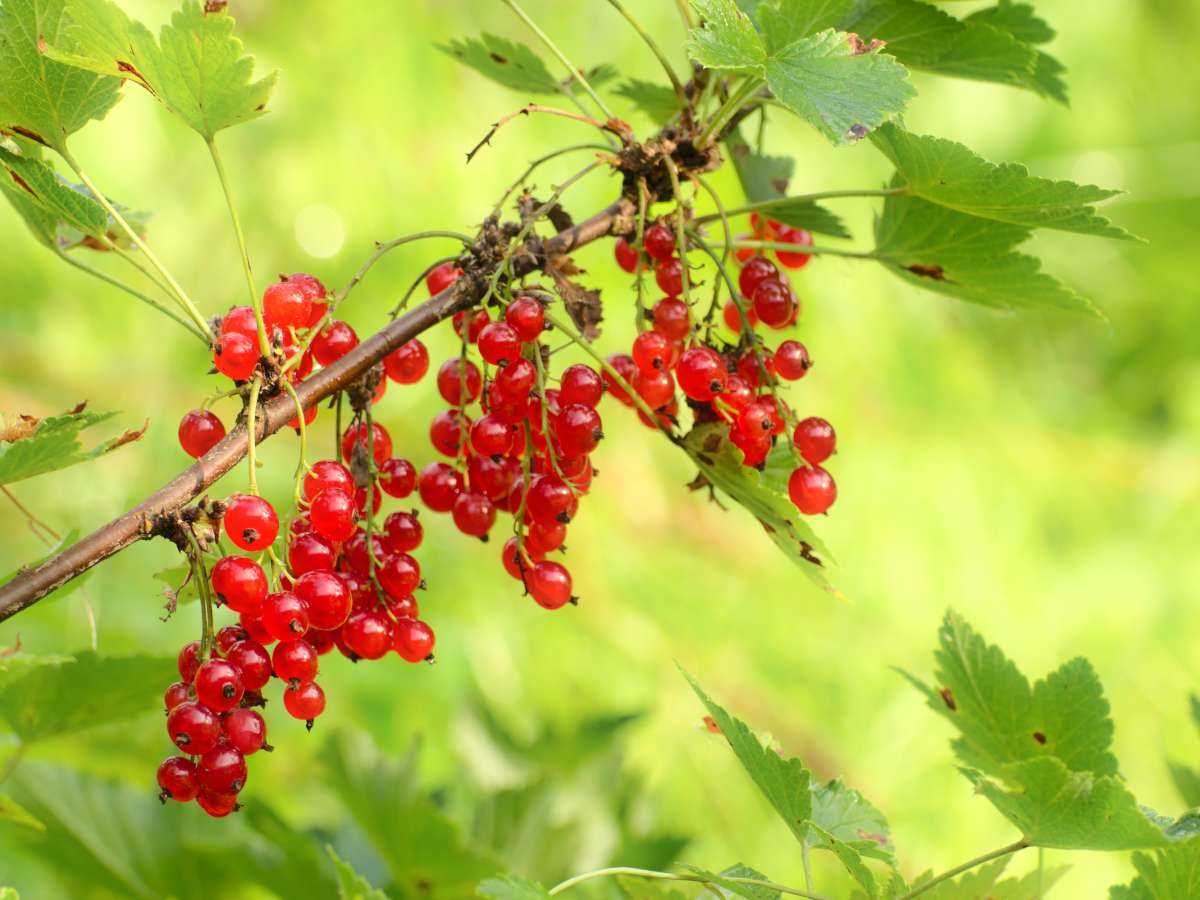
Watering is an essential aspect of caring for currant plants in mid-summer. Proper watering ensures that the plants stay healthy and produce abundant fruit. Here are some tips on how to water your currant plants adequately:
- Check the soil moisture: Before watering, it is important to check the moisture level of the soil. Stick your finger about an inch into the soil to gauge its dampness. If it feels dry, it’s time to water.
- Water deeply: When watering, make sure to water deeply, allowing the water to penetrate the root zone. Shallow watering can lead to shallow root growth and weak plants.
- Water in the morning: It is best to water your currant plants in the morning, as this allows the leaves to dry out during the day. Watering in the evening can promote the growth of fungal diseases.
- Use a soaker hose or drip irrigation: Instead of using overhead sprinklers, consider using a soaker hose or drip irrigation system. These methods deliver water directly to the root zone, minimizing evaporation and water waste.
- Mulch: Applying a layer of organic mulch around your currant plants can help conserve moisture and regulate soil temperature. Mulch also helps prevent weed growth, which can compete with the plants for water and nutrients.
By following these tips, you can ensure that your currant plants receive adequate water, promoting their growth and development throughout the summer season.
Applying Organic Fertilizers
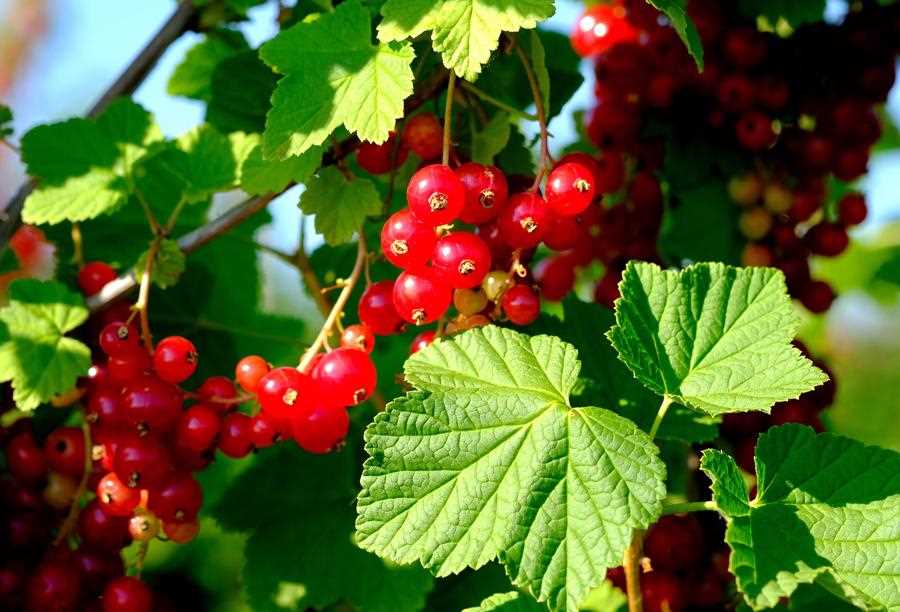
Applying organic fertilizers to your currant plants can provide them with essential nutrients and help maintain a healthy growing environment. Here are some tips for applying organic fertilizers:
- Choose the right fertilizer: Look for organic fertilizers that are specifically formulated for fruit-bearing plants. These fertilizers typically contain a balanced blend of nutrients, including nitrogen, phosphorus, and potassium.
- Apply at the right time: It is best to apply organic fertilizers to currant plants after the fruiting season. Applying fertilizers during this time allows the plants to absorb the nutrients and replenish their energy reserves for the next growing season.
- Follow the instructions: Read the instructions on the fertilizer packaging carefully and follow the recommended application rates. Over-fertilizing can harm the plants and cause nutrient imbalances in the soil.
- Avoid direct contact with the foliage: When applying organic fertilizers, make sure to avoid direct contact with the foliage of the currant plants. Direct contact can cause damage to the leaves and increase the risk of leaf burn.
- Water the plants after application: After applying the organic fertilizer, water the plants thoroughly. This helps to dissolve the fertilizer and allows the nutrients to penetrate the soil and reach the roots of the plants.
By following these tips, you can ensure that your currant plants receive the necessary nutrients to thrive and produce healthy fruit.
Protecting from Birds and Other Animals
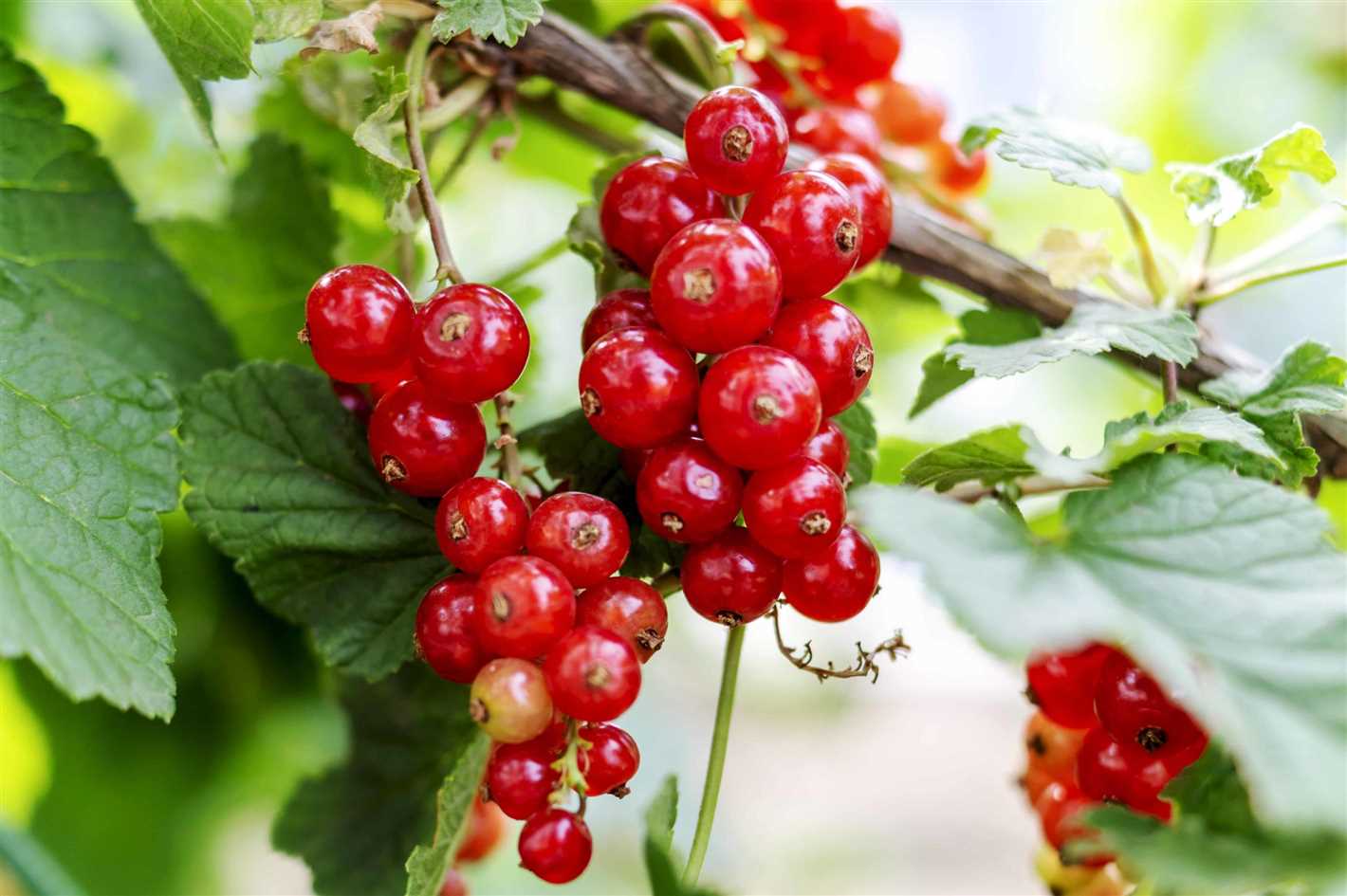
One of the biggest challenges in caring for currants in mid-summer is protecting them from birds and other animals who may be attracted to the fruit. Here are some tips to keep your currant bushes safe:
- Netting: Use bird netting to create a barrier around your currant bushes. Make sure the netting is securely fastened to prevent birds from getting entangled.
- Scare Tactics: Hang shiny objects such as old CDs or aluminum foil strips from nearby trees or stakes to deter birds. You can also use scarecrow models or inflatable predators to frighten them away.
- Repellents: Apply commercial animal repellents or homemade solutions to the area around the currant bushes. These can include garlic sprays or mixtures of water and chili peppers.
- Physical Barriers: Install fences or cages around your currant bushes to keep out larger animals like rabbits or deer. Make sure the barriers are tall enough to prevent them from easily accessing the fruit.
- Companion Planting: Planting other crops or flowers that naturally repel birds and animals around your currant bushes can help protect them. Some examples include marigolds, geraniums, and mint.
By implementing these measures, you can significantly reduce the risk of your currants being damaged or eaten by birds and other animals. This will ensure a bountiful harvest of delicious currants for yourself to enjoy!
General Maintenance and Weed Control
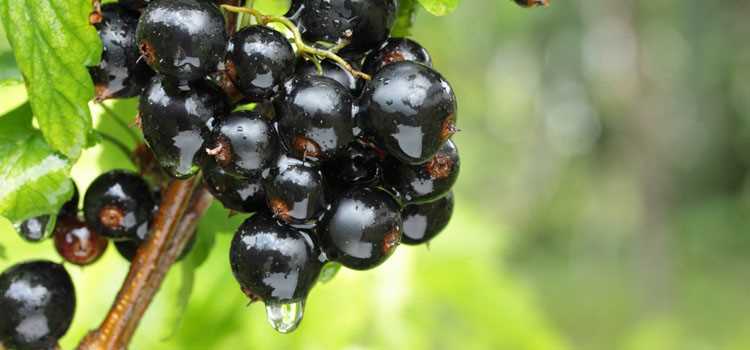
After the fruiting season, it is important to perform general maintenance tasks to ensure the health and productivity of your currant plants. This includes weed control, pruning, and fertilizing.
Weed Control
Keeping the area around your currant plants free from weeds is crucial for their well-being. Weeds compete with the currant plants for nutrients, water, and sunlight, which can hinder their growth. It is recommended to regularly inspect the area and remove any weeds manually or by using organic weed control methods. Mulching around the plants can also help suppress weeds and retain soil moisture.
Pruning
Pruning is an essential part of currant plant maintenance. It helps maintain the shape of the plant, promotes air circulation, and removes any dead or diseased branches. Pruning should be done during the dormant season in late winter or early spring. Remove any damaged or weak branches, as well as any branches that are crossing or rubbing against each other. Additionally, prune to maintain an open center with multiple main stems.
Fertilizing
Fertilizing currant plants can promote healthy growth and fruit production. It is best to perform a soil test to determine the nutrient levels and pH of the soil. Based on the results, you can add organic fertilizers such as compost, well-rotted manure, or balanced granular fertilizers rich in nitrogen, phosphorus, and potassium. Apply the fertilizer evenly around the base of the plants, and avoid getting any on the foliage to prevent burning.
Additional Maintenance Tasks
In addition to weed control, pruning, and fertilizing, there are a few other general maintenance tasks that can benefit your currant plants:
- Regularly monitor for pests and diseases, and take appropriate action if necessary.
- Monitor soil moisture levels and provide additional watering during dry periods.
- Remove any fallen leaves or debris from around the plants to prevent disease and pest problems.
- Monitor for signs of nutrient deficiencies and address them accordingly.
Conclusion
By performing general maintenance tasks such as weed control, pruning, and fertilizing, you can ensure the health and productivity of your currant plants. Regularly monitoring and addressing any issues that arise will help keep the plants thriving and maximize their fruit production.
Question-answer:
What should I do with currant bushes in mid-summer?
In mid-summer, there are a few important tasks to take care of with currant bushes. First, you should prune out any dead or damaged branches. Second, it’s a good idea to remove any weeds or grass that may be growing around the base of the bushes. Third, you can consider adding a layer of mulch around the base of the plants to help retain moisture and suppress weed growth. Fourth, you should check for signs of pests or disease and take appropriate action if necessary. Finally, it’s important to water the plants regularly, especially during hot and dry periods.
What are some signs of pests or disease in currant bushes?
There are several signs that may indicate pests or disease in currant bushes. Common pests include aphids, spider mites, and currant fruit flies. Look for clusters of small, green or black insects on the leaves or stems, as well as webbing or stippling on the foliage. Other signs of pests may include distorted or curled leaves, yellowing or wilting foliage, and damaged fruit. As for diseases, currant bushes can be susceptible to powdery mildew, leaf spot, and currant rust. Look for white or gray powdery growth on the leaves, spots or discoloration on the foliage, and orange or yellow pustules on the undersides of the leaves. If you notice any of these signs, you should take appropriate action to control the pests or diseases.
How often should I water currant bushes in mid-summer?
In mid-summer, it’s important to water currant bushes regularly to ensure they have adequate moisture. Generally, currant bushes prefer consistently moist soil, so it’s important to check the soil moisture regularly. As a general guideline, it’s recommended to water the plants deeply at least once a week, providing enough water to moisten the soil to a depth of 6-8 inches. However, the frequency may vary depending on weather conditions and the type of soil. If the weather is particularly hot or dry, you may need to water more frequently. On the other hand, if the soil is heavy or retains moisture well, you may be able to water less often. It’s important to monitor the plants and adjust the watering schedule as needed.
Is it necessary to add mulch around currant bushes in mid-summer?
Adding mulch around currant bushes in mid-summer can be beneficial for a few reasons. First, mulch helps to conserve moisture in the soil, which is particularly important during hot and dry periods. This can help to prevent the soil from drying out too quickly and reduce the need for frequent watering. Second, mulch helps to suppress weed growth around the base of the bushes, which can compete with the plants for moisture and nutrients. By preventing weeds from taking hold, you can help to ensure that the currant bushes have access to the resources they need for healthy growth. Finally, mulch can also help to regulate soil temperature, keeping it cooler during hot weather and warmer during colder periods. Overall, adding mulch around currant bushes can help to improve their overall health and productivity.
When is the best time to prune currant bushes?
The best time to prune currant bushes is typically in late winter or early spring, before new growth begins. This is when the plants are dormant and pruning can help to shape the bushes and promote healthy growth. However, there are also some tasks that can be done in mid-summer to maintain the plants. After fruiting, it’s a good idea to prune out any dead or damaged branches. This will help to improve air circulation and reduce the risk of pests and diseases. Additionally, pruning can help to remove old wood and stimulate new growth for next year’s fruit production. When pruning, make sure to use sharp, clean tools and make clean cuts just above a bud or lateral branch. It’s also a good idea to remove any suckers that may be growing from the base of the plants.







